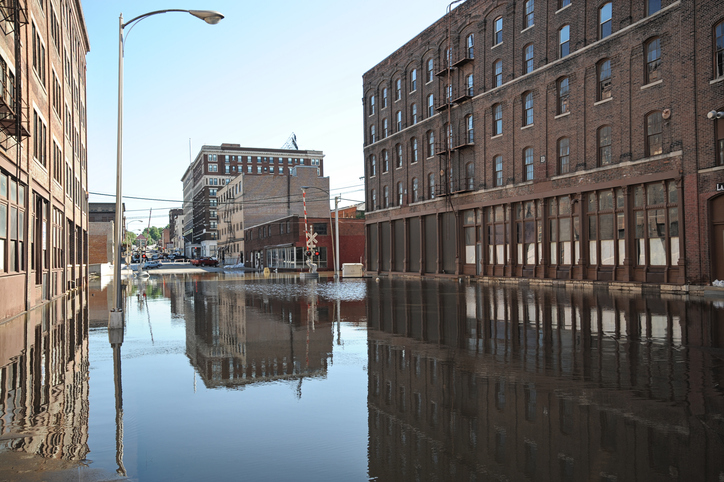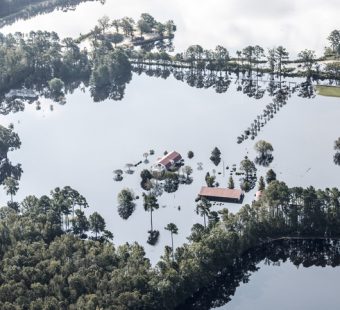
Commercial Property Flood-Risk Study Underscores Climate-Related Economic Peril
By Jeff Dunsavage, Senior Research Analyst, Triple-I (01/04/2022)
Nearly 730,000 commercial and multi-unit residential properties in the contiguous United States are at risk of flood damage, according to a new report from the First Street Foundation. Climate change could increase the annual costs to repair or replace these structures by about 25 percent between 2022 and 2052, from $13.5 billion to more than $16.9 billion, the report says.
Previous studies by First Street have provided flood risk data for individual homeowners. This report offers a data-driven assessment of flood-related risks on the commercial market. It assesses the risk of flood damage to 3.6 million properties and related economic impacts. For example, flood damage to commercial buildings could result in 3.1 million days of lost business operation in 2022, growing to 4 million days by 2051 – a 29 percent increase.
In light of the economic disruptions of the past two years – caused in part by the pandemic and exacerbated by back-to-back above-average Atlantic hurricane seasons, record-setting wildfires, two Iowa derechos in as many years, unprecedented freezes in the U.S. South, and recent anomalous tornado activity – First Street’s projections contribute to an increasingly challenging picture for risk management.
Risk transfer is not enough
Half a billion people worldwide are affected by floods annually, and about 90 percent of all U.S. natural disasters involve flooding. Whether related to coastal and inland inundations due to hurricanes, extreme rainfall, snowmelt, mudflows, or other events, floods cause billions of dollars in losses each year. According to the Federal Emergency Management Agency (FEMA), one inch of flood water can cause as much as $25,000 in damage to a home.
As Triple-I CEO Sean Kevelighan put it in his introduction to Triple-I’s April 2021 paper, Flood: Beyond Risk Transfer: “New products alone will not close the [flood] protection gap…. Our understanding of loss trends and expertise in assessing and quantifying risk must be joined at the hip to technology, public policy and finance, and science. We need to partner with communities and businesses at every level to promote a broad resilience mindset focused on pre-emptive mitigation and rapid recovery.”
“Commercial real estate supports the economic heart of American cities,” the First Street study says, “and multi-unit residential properties also play an important part in keeping the economy moving by housing members of America’s workforce…. As the frequency and severity of floods accelerate along with the changing climate, gaining a more comprehensive understanding of the total risk posed to these buildings and understanding the uneven effects of climate change across different metros and states is vital.”
As the pandemic-related economic contraction and on-again/off-again recovery have shown, businesses need predictability to be able to make the long-term investments that can help communities thrive. Flooding that halts or delays business operations is just one peril among many that companies, governments, and communities need to mitigate in advance to be able to rebound from them when they strike.



